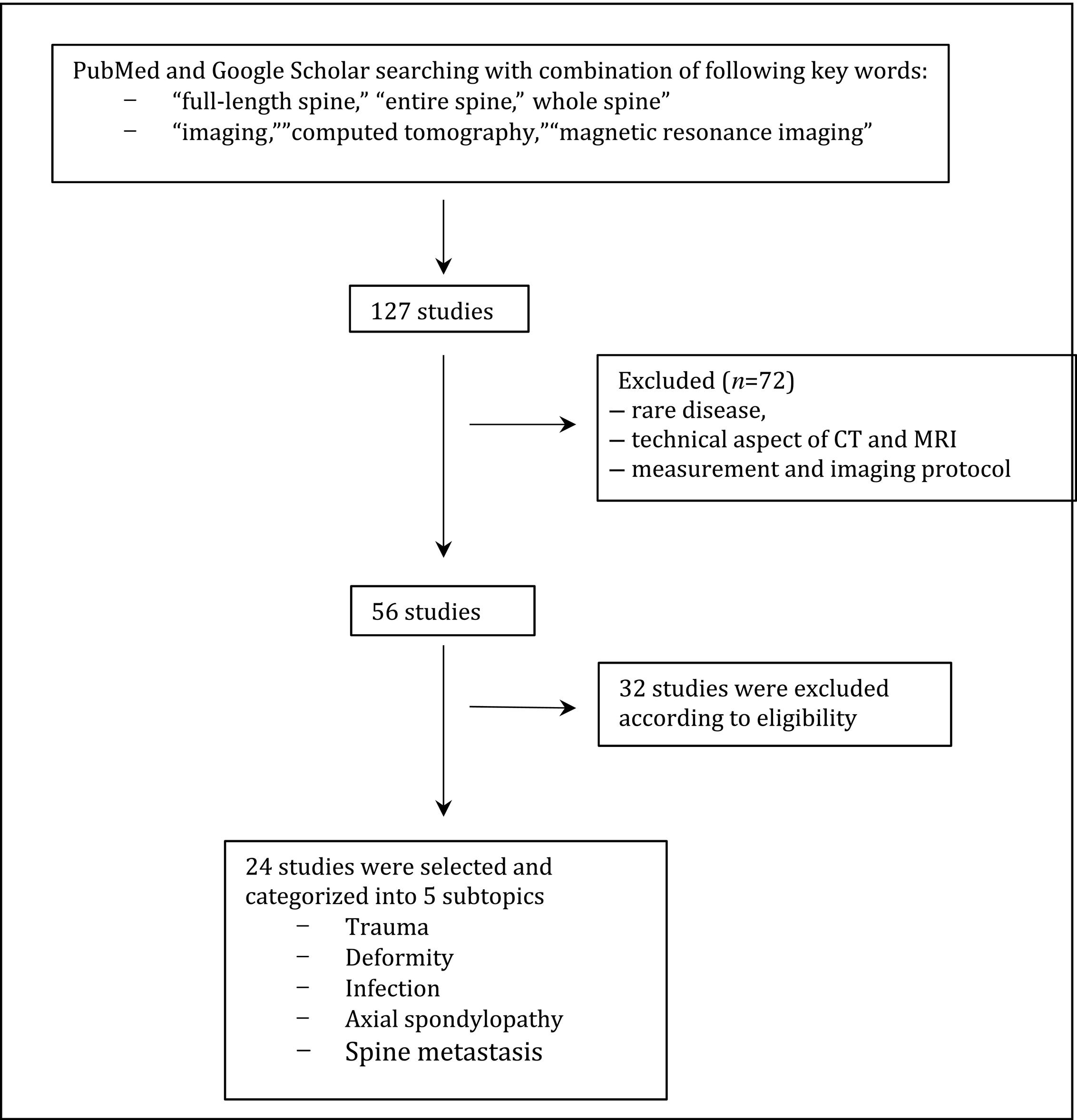Physical Address
304 North Cardinal St.
Dorchester Center, MA 02124
The authors declare no conflicts of interest regarding the publication of this paper.
There are multiple imaging modalities to evaluate the spine. The type of imaging tool for the spine depends on the type of disease, the amount of radiation hazard, as well as contraindications and any allergy to contrast.
Among the multiple imaging strategies, computed tomography (CT) is a reliable method to evaluate the spine and has better sensitivity for bony abnormality than radiography or magnetic resonance imaging (MRI). In the past, the time factor limited the use of CT. However, owing to the development of fast spiral CT and multidirectional CT (MDCT), the whole spine can be examined in a very short time. However, CT is less sensitive to a patient’s movement than MRI. Now, it is widely applied to assess trauma, deformity, metastasis, and pre- and postoperative analyses.
MRI is one of the most sensitive and specific modalities to visualize the spine. Furthermore, there are no risks of radiation hazard. It provides information about the spinal neural structures including cord, cauda equina and roots, the vertebral bodies, and intervertebral disc. Multiple sequences can be obtained in different planes and each sequence helps in evaluating various changes of the spine. The most commonly using sequences include sagittal and axial T1 and T2, and a sagittal STIR (short tau inversion recovery). Postcontrast T1-weighted images are useful for evaluating spinal infections, postoperative complications, vascular malformation, primary spinal tumors, and metastases. STIR sequences are beneficial in assessing marrow edema, which demonstrates an increased signal on these sequences.
In most cases, spine CT and MR images are obtained to focus on the region of interest where the pathology exists. However, full-length spine examination can be helpful for a more comprehensive evaluation and early detection of disease and trauma ( Fig. 1 ). Therefore, the aim of this chapter was to describe when and how full-length spine evaluation through CT and MRI is applied.

A literature review using PubMed and Google Scholar was performed. To identify relevant studies, search was conducted on studies in English published between 2000 and February 2020 using various combinations of the following key words: “full-length spine,” “entire spine,” “whole spine,” “imaging,” “computed tomography,” and “magnetic resonance imaging.” Based on this search, 127 studies were initially detected. After excluding articles about rare disease, technical aspects of CT and MRI, measurement, and imaging protocol, 56 articles were selected. After an internal peer review with all the authors of this article and a supplementary search that involved bibliographic screening and citation tracking associated with individual spine pathology, 24 articles of interest were finally selected ( Fig. 2 ). Those articles are categorized as “trauma,” “deformity,” “infection,” “axial spondyloarthropathy,” and “spinal metastasis” described in the following sections.

Become a Clinical Tree membership for Full access and enjoy Unlimited articles
If you are a member. Log in here